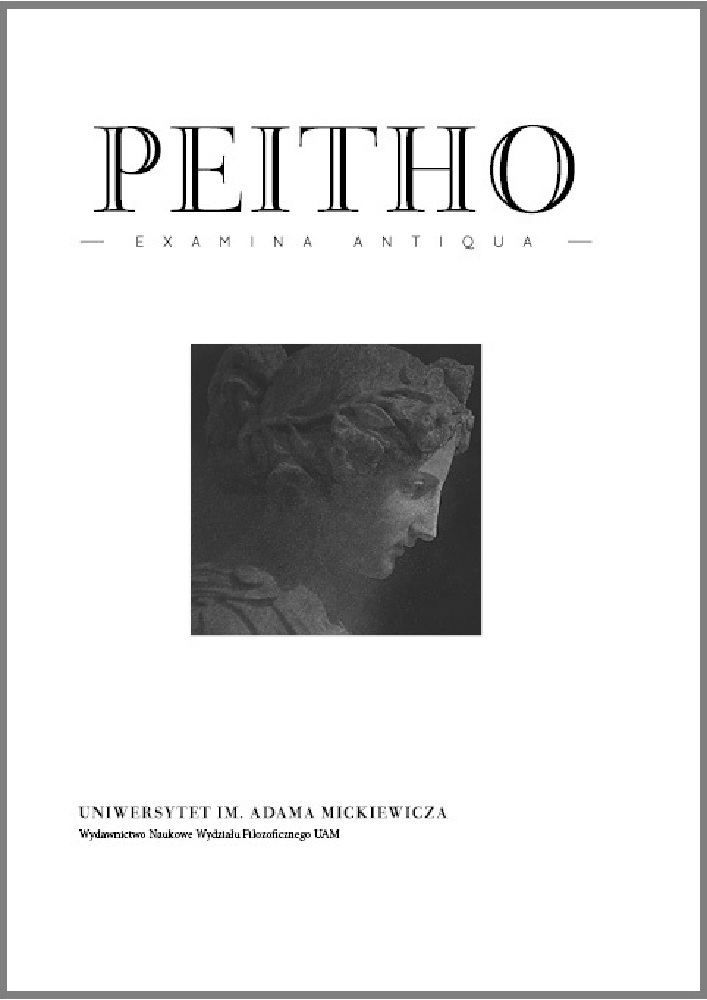Abstract
The present paper argues that the teachings of Anaximander are much better knowable than they actually appear, since a number of his teachings have the privilege of being almost transparent in their predicative content as well as in their logic. As a matter of fact, one can quite easily come to understand the train of thought which lies behind Anaximander’s most momentous conjectures. Thus, a largely unexpected Anaximander comes to light despite the availability of the majority of the relevant sources since 1903. Two main areas appear to be particularly prominent: on the one hand, the complex body of various conjectures and doctrines that helps to understand the system of spatial relationships from Miletus to the stars and, on the other hand, the equally complex body of conjectures and doctrines whose primarily concern is the macro-story of the Earth from its most remote past to its predictable future. The merits of Anaximander as an earth-researcher are much greater than one could actually imagine. It is suggested here that what philosophy owes to him in particular lies in his quest for knowledge, his method, his cognitive hybris, and his intellectual discipline, rather than individual doctrines. A comparison with Thales follows in the last paragraph.
References
Barnes, J., 1979, The Presocratic Philosophers, London-Henley-Boston.
Betegh, G., 2001, «Le problème des représentations visuelles dans la cosmologie présocratique: pour une histoire de la modélisation», in A. Laks-C. Loguet (eds.), Qu’est-ce que la philosophie présocratique? / What is Presocratic Philosophy?, Villeneuve d’Ascq, pp. 381–415.
Cerri, G., 2007, «L’oceano di Omero: un’ipotesi nuova sul percorso di Ulisse», in E. Greco-M. Lombardo (eds.), Atene e l’Occidente. I grandi temi. Atti ... 2006, Atene, pp. 13–51.
Cleve, F.M., 1965, The Giants of Pre-Sophistic Greek Philosophy, The Hague.
Corre, J.-F., 2010, «Le gnomon d’Anaximandre», Revue de Philosophie Ancienne 28.2, pp. 3–31.
Corre, J.-F., 2013, «Proportions du ciel d’Anaximandre», Phronesis 58, pp. 1–16.
Couprie, D.L., 2011, Heaven and Earth in Ancient Greek Cosmology, From Thales to Heraclides Ponticus, New York-Dordrecht-Heidelberg-London.
Coxon, A.H., 2009, The Fragments of Parmenides, Edited with New Translations by R. McKirahan, Las Vegas [prima ed.: Assen 1986].
Dὕhrsen, N.C., 2013, «Anaximander», in H. Flashar-D. Bremer-G. Rechenauer (eds.), Frὕhgriechische Philosophie (Die Philosophie der Antike 1), Basel, pp. 263–320.
Ferber, R., 1986, «Der Ursprung der Wissenschaft bei Anaximander von Milet», Theologie und Philosophie 61, pp. 551–561.
Forbiger, A., 1842, Handbuch der alten Geographie, Band I, Leipzig.
Gehrke, H.-J., 1998, «Die Geburt der Erdkunde aus dem Geist der Geometrie. Überlegungen zur Entstehung und zur Frühgeschichte der wissenschaftlichen Geographie bei den Griechen», in W. Kullmann-J. Althoff- M. Asper (eds.), Gattungen wissenschaftlicher Literatur in der Antike, Tübingen, pp. 165–192.
Hahn, R., 2001, Anaximander and the Architects. The Contribution of Egyptian and Greek Architectural Technologies on the Origins of Greek Philosophy, Albany.
Hahn, R. 2010, Archaeology and the Origins of Philosophy, Albany.
Harley, J.B., Woodward, D., The History of Cartography, volume one, Cartography in Prehistoric, Ancient and Medieval Europe and the Mediterranean, Chicago & London.
Heilen, S., 2000, «Die Anfänge der wissenschaftlichen Geographie», in G. Wöhrle (ed.), Geschichte der Mathematik und der Naturwissenschaften, II, Stuttgart, pp. 35–54.
Kahn, CH. H., 1960, Anaximander and the Origins of Greek Philosophy, New York.
Kirk, G.S., Raven, J.E., Schofield, M., 1983, The Presocratic Philosophers, Cambridge [KRS].
Naddaf, G., 2001, «Anaximander’s Measurements Revisited», in A. Preus (ed.), Before Plato. Essays in Ancient Greek Philosophy, VI, Albany, pp. 5–21.
Perilli, L., 1966, La teoria del vortice nel pensiero antico. Dalle origini a Lucrezio, Ospedaletto PI.
Popper, K. R., 1958, «Back to the Presocratics», Proceedings of the Aristotelian Society 59, pp. 1–24.
Riedel, M., 1987, «Arche und Apeiron. Über das Grundwort Anaximanders», Archiv fὕr Geschichte der Philosophie 69, pp. 1–17.
Rovelli, C., 2011, Che cos’è la scienza. La rivoluzione di Anassimandro, Milano [ed. francese: Paris 2009].
Rossetti, L., 2004, «Empedocle scienziato», in L. Rossetti-C. Santaniello (eds.), Studi sul pensiero e la lingua di Empedocle, Bari, pp. 95–198.
Rossetti, L., 2006, «Caratteristiche tipologiche dei trattati Peri physeos», Nova Tellus 24.2, 2006, pp. 111–146.
Rossetti, L., 2013a, «Cominciare a misurare il cosmo. La precisione di cui fu capace Talete e il sole „largo quanto un piede umano” (Eraclito)», B@belonline 13, pp. 35–52.
Rossetti, L., 2013b, «Anassimene vs. Anassimandro», in A. Gostoli-G. Velardi (eds.), Mythologein. Mito e forme di discorso nel mondo antico. Studi in onore di Giovanni Cerri, Roma [in prep.].
Rossetti, L., 2013c, « L’ideazione del pinax, ‘mediale Innovation’ di Anassimandro», in D.F. Leão-G. Cornelli- M.C. Peixoto (eds.), Dos homens e suas ideias: estudos sobre as Vidas de Diógenes Laércio, Coimbra-São Paulo, pp. 89-100.
Wöhrle, G., 2009, Die Milesier: Thales, Berlin.
Wöhrle, G., 2011, Die Milesier: Anaximander und Anaximenes, Berlin.
License
Peitho provides immediate open access to its content on the principle that making research freely available to the public supports a greater global exchange of knowledge.
